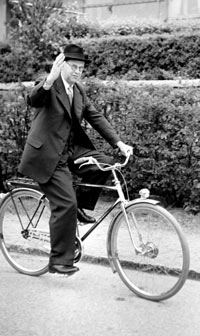October 9 In Swedish History
In 1946 Sweden gets a new Prime Minister, who will not resign from the post until 22 years later.
-
 Down to earth in a Swedish way, Erlander was considered a "man of the people" - in some ways a Swedish Harry Truman...
Down to earth in a Swedish way, Erlander was considered a "man of the people" - in some ways a Swedish Harry Truman... -
-
October 9 In Swedish History
1946: Tage Erlander becomes the new Prime Minister of Sweden. Erlander was born on June 13 in 1901 in Ransäter in Värmland, the son of teacher and organist Erik Gustaf Erlander. Tage Erlander became acquainted with Social Democracy during his studies at Lund University, and became active in student politics.
He had come to Lund to study chemistry and physics, but changed course and instead focused on statistics and economics. Ascending to the World War II coalition government in 1944, Erlander rose unexpectedly to leadership upon the death of Prime Minister Per Albin Hansson in October 1946, cementing the position of the Social Democratic Party as the virtual government of Sweden. Known for his moderation, pragmatism and self-irony, Erlander constantly sought approval from the liberal-conservative opposition for his policies, de facto dropping all pretences of wide-scale nationalizations while introducing reforms such as universal health insurance, pension additions and a growing public sector while stopping short of raising tax levels above the average OECD levels at the time. In 1951-1957, he espoused a coalition government with Peasants' League chairman Gunnar Hedlund in order to secure majority and stability, led by himself.
Resigning after the Swedish general election, 1968, his seventh and most successful election in which the Social Democrats surpassed all four opposition parties in terms of seats, Erlander was succeeded, in the midst of constitutional reforms, by his long-time novice and friend Olof Palme. Dying on June 21, 1985 at age 84, Erlander's funeral procession crossed the country from Stockholm to his home town of Ransäter in triumph for his final interment. -
-
